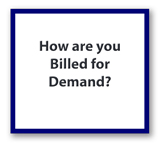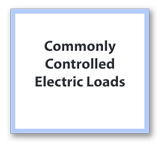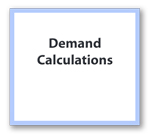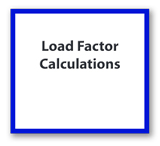Energy Demand Management Resources
Energy Sentry has been manufacturing energy demand controllers and monitoring equipment for over 40 years. We are happy to share our expertise and knowledge.
Frequently Asked Questions for Demand Management:
What kinds of loads can I control?
Answer:
Generally speaking, electric loads that are ideal for demand control are those that are both large and contain some sort of thermal storage. For example, a water heater is generally one of the largest electrical loads in a home and also has a huge amount of thermal storage. Assuming “average” water use, the water can be heated at any time without effecting comfort or convenience.
How do I set and change my demand limit?
Answer:
It depends on the model but generally speaking, go to the Demand Limit mode, dL and use the increase or decrease buttons, keys or rotary controls. You can turn these clockwise or counterclockwise to increase or decrease the demand limit. If you are still struggling to set your limit refer to the product manual included with your Energy Sentry. There are also downloadable PDF versions of the product manuals on the Support Page.
How do I change load priorities?
Answer:
Go to the controller’s system programming mode, and move to the settings that start with Pr. For example Pr1 is the priority for control point #1. It can be set from 1 to 16 where 1 is the highest priority and 16 is the lowest priority. Control points with the same priority will rotate, that is, take turns managing the loads so that each load will have approximately the same on and off times. For more detailed information refer to the product manual included with your Energy Sentry. There are downloadable PDF versions of product manuals on the Support Page.
How can I tell if I'm saving money?
Answer:
It's best to chart your usage and costs of electricity for the 12 months prior to control. If you’d like to do it for the past 3 or 5 years that’s even better. You can use this as your baseline. It’s not absolutely perfect but it is indicative of your energy use over time. Compare this year’s costs over last year’s costs, not including any rate increases that have gone into effect in the last year. Also look to see if this year’s kwh usage is higher than last year’s and adjust the usage to compare “apples to apples”.
How can I tell if I'm on the right rate?
Answer:
Compare your costs on each rate. In most cases, in order to save money with a demand management system you need to be on a demand rate or have an all-electric building. Unless you are simply trying to stay below the threshold of the next higher rate class, you will need to be billed on a demand-based rate that charges you per KW for each KW of peak demand. Without this separate demand charge, you will not be able to benefit from demand control.
Will this work with solar or wind systems?
Answer:
YES - Demand management systems will work with Solar PV and Wind systems. They are able to control demand both when the resource is and is not operating. In the event that the resource is greater than the incumbent local usage, the demand controller must be able to determine the direction of electric flow. This is so that if power is flowing back to the utility, loads are not shed by the demand management system. In addition to the above, demand management systems can help optimize the use of solar by matching the usage to the resource's size, thus minimizing any energy that must be purchased from the local utility.
Should I use minimum on and off times?
Answer:
Only inductive loads like air conditioner and heat pump compressors should use minimum on and off times. This is because those loads need the protection of the minimum-off times and the corresponding energy efficiency of minimum-on times.
Educational Literature:
Tech Tips
The following information is for certified Energy Sentry dealers and installers. You may browse the Tech Tips here or use the links below to download the Tips as PDF documents.
Basic Tips for Demand Control
Tips for Controlling Common Electric Loads
Current Transformer & Remote Relay Tips









